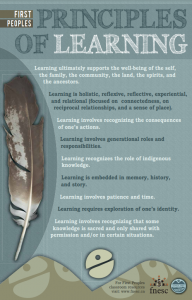Note: Deeply sensitive and triggering content
This week we were reminded of the horrific treatment and genocide of Indigenous children by the Church and Government in Canada, when remains of 215 children were found at a former residential school located close to home, in Kamloops, British Columbia, Canada. I cannot find the words to express my anger and sadness with this and my heart and thoughts are with all of the survivors, families, and Indigenous communities who are having to deal with the trauma caused by our government.
I could not do a post this week without thinking about this and looking into resources to do with residential schools. I came across a three-part podcast series called Residential Schools hosted by Shaneen Robinson-Desjarlais and created by Historica Canada. The podcasts share experiences by First Nations, Métis, and Inuit survivors of residential schools, as well as their families and communities. The stories they share are so vivid, personal, heart wrenching as well as triggering for many. This podcast series is part of a Residential Schools in Canada: History and Legacy Education Guide that I was able to find through the podcast. The guide includes activities, images, stories, and videos to discuss residential schools in Canada and lead to questions about our current education system, as well as what actions we are taking towards reconciliation.
I also looked into the National Centre for Truth and Reconciliation website and exploring and discovering an abundance of information that I could learn from and hopefully then incorporate into my teaching. There are various reports available, such as the Truth and Reconciliation Commission of Canada: Calls to Action, educational resources by grades and various programs and events, such as Every Child Matters, and a memorial “to forever remember and honour the children who never returned home from residential schools.” There is still a lot I do not know about Truth and Reconciliation and I need to do better.
Schools are supposed to be one of the places children trust, but that is not always the case. As a teacher, I need to let my students know they are cared for, safe, and matter. Everyday.
Historica Canada. (2021). Residential Schools in Canada: History and Legacy Education Guide. Historica Canada. http://education.historicacanada.ca/en/tools/647
The Canadian Encyclopedia. (2020, Feb. 21). Residential Schools Podcast Series. The Canadian Encyclopedia. https://www.thecanadianencyclopedia.ca/en/article/residential-schools-podcast-series
The Canadian Press. (2021, May 28). Remains of 251 children found at former residential school in British Columbia. APTN News. https://www.aptnnews.ca/national-news/remains-of-215-children-found-at-former-residential-school-in-british-columbia/
The National Centre for Truth and Reconciliation. (2021). https://nctr.ca/
